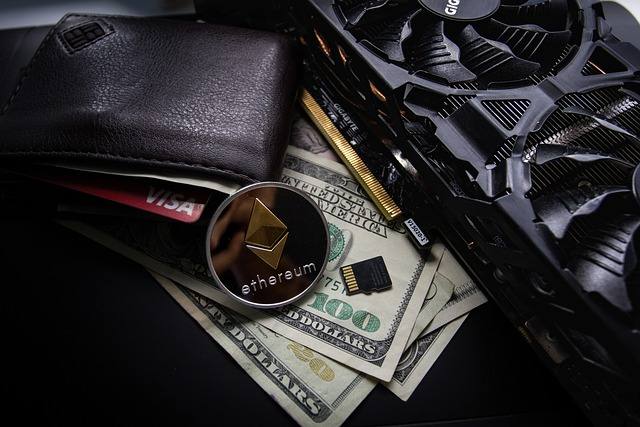
- Introduction: What Are NFTs and Why Are They Popular?
Non-Fungible Tokens (NFTs) have revolutionized digital ownership. Unlike cryptocurrencies like Bitcoin, NFTs are unique digital assets stored on a blockchain. They represent ownership of art, music, videos, virtual real estate, and more.
Why Are NFTs So Popular?
✅ Prove Digital Ownership – Blockchain technology ensures authenticity.
✅ Empower Creators – Artists can sell directly to buyers without intermediaries.
✅ More Investment Opportunities – NFTs have become valuable digital assets.
NFTs, in 2025, will be expanding into gaming, real estate, and financial markets besides art and collectibles.
- The Transformation of NFTs: From Art to Reality
NFTs began as digital art but have transformed quickly. Today, they are used for:
???? Gaming Assets – Players own in-game items and skins.
???? Virtual Real Estate – Metaverse platforms enable buying and selling digital land.
???? Fashion & Luxury Goods – High-end brands tokenize products for authenticity.
???? Music & Entertainment – Artists release exclusive content as NFTs.
As the NFT market matures, more industries will integrate NFT-powered solutions.
- The Role of NFTs in Gaming and Metaverse
The gaming industry is one of the biggest adopters of NFTs. In Play-to-Earn (P2E) games, players own and trade in-game assets.
Top NFT Gaming Projects in 2025:
Axie Infinity – One of the first play-to-earn games.
The Sandbox & Decentraland – Virtual worlds where users buy land and create experiences.
Illuvium & Star Atlas – AAA-quality blockchain games with NFT assets.
Why NFTs Are Changing Gaming?
✅ Ownership: Players truly own their items.
✅ Interoperability: Use assets across multiple games.
✅ Monetization: Gamers earn real money through NFTs.
NFT-powered games will continue to disrupt traditional gaming models in 2025.
- NFTs in Music and Entertainment Industry
Musicians and content creators are using NFTs to connect directly with fans and monetize their work without middlemen.
NFTs in Music:
Artists sell exclusive tracks, albums, and concert tickets as NFTs.
Fans buy royalty NFTs to earn a share of streaming revenue.
Platforms like Royal and Audius allow artists to control their music rights.
NFTs in Film & TV:
NFT-backed movie releases give fans exclusive access.
Hollywood studios are looking into blockchain for film distribution.
Netflix and Disney are likely to release NFT-based digital collectibles.
NFTs are changing the way artists and fans connect, making the entertainment industry more transparent and decentralized.
- Tokenized Real Estate and Digital Ownership
NFTs are no longer just digital goods; they are moving into physical assets such as real estate.
How Real Estate NFTs Work:
???? Properties are tokenized and sold as NFTs.
???? Ownership is secured on the blockchain, reducing fraud.
???? Fractionalized NFTs enables investors to own a piece of real estate.
Top Real Estate NFT Projects:
Propy – Tokenized real estate transactions.
Roofstock onChain – Buying and selling real estate NFTs.
Metaverse Real Estate – Virtual land in The Sandbox & Decentraland.
The real estate industry is the most promising market for NFT expansion.
- NFTs and Social Media: The Creator Economy
Social media platforms are incorporating NFTs to enable more authorships and open up new monetization channels for creators.
NFTs on Social Media:
???? Twitter & Instagram – Users display NFTs as profile pictures
???? YouTube & TikTok – Creators sell viral moments as NFTs
???? OnlyFans & Patreon – Exclusive NFT memberships for loyal fans
The creator-owned digital assets will change how online influencers make money.
- Fractionalized NFTs: Increasing Accessibility of High-Value Assets
Some NFTs sell for millions. Small investors, however, can’t afford that.
Fractionalized NFTs solve the problem.
What Are Fractional NFTs?
Break up high-value NFTs into smaller, tradable shares.
Enable multiple investors to co-own an NFT.
Increase liquidity in the NFT market.
Examples of Fractional NFT Projects
Fractional.art enables users to buy fractions of high-value NFTs.
Unic.ly creates NFT index funds for investors.
Fractional NFTs will democratize access to premium digital assets.
- AI-Generated NFTs: The Future of Digital Creativity
Artificial Intelligence (AI) is transforming the NFT market. AI-generated NFTs are artworks created by machine learning algorithms.
Examples of AI NFT Projects:
Art Blocks – Generative art NFTs using smart contracts.
DeepDream by Google – AI-powered digital paintings.
GANs (Generative Adversarial Networks) – AI-created NFT collections.
AI and NFTs will expand digital creativity and create new opportunities for artists.
- NFT Regulations and Legal Challenges
As NFTs become more mainstream, governments are introducing regulations to protect investors.
Key Regulatory Challenges:
❌ Intellectual Property Issues – Preventing counterfeit NFTs.
❌ Taxation of NFT Sales – Clearer guidelines needed for NFT income.
❌ Fraud & Scams – Fake projects and rug pulls affecting the market.
How Regulation Will Impact NFTs in 2025?
✅ Stronger consumer protection laws.
✅ Clearer taxation rules for NFT earnings.
✅ More oversight on NFT marketplaces.
Legitimacy and Trust Will Come Through Regulation
- Eco-Friendly NFT Solutions
The intense energy consumption of NFTs on Ethereum has been one of the criticism thrown at them. In 2025, the big trend will be eco-friendly blockchain solutions.
Eco-Friendly Sustainable NFT Platforms:
Ethereum 2.0 -Proof-of-Stake that reduces energy consumption by 99%.
Tezos (XTZ) -Low-carbon footprint Blockchain for NFTs.
Immutable X – Zero gas fees and carbon-neutral transactions.
More will be focusing on green blockchain technologies for NFTs.
- Conclusion: Are NFTs Here to Stay?
NFTs are no longer just a trend—they are a game-changer in digital ownership, gaming, finance, and entertainment.
NFT Predictions for 2025:
✔️ More real-world NFT applications (real estate, luxury goods).
✔️ AI-driven NFT creativity.
✔️ Better security and regulation.
✔️ Integration with the Metaverse and DeFi.
NFTs are transforming how we buy, sell, and own digital assets—and their potential is just beginning.

